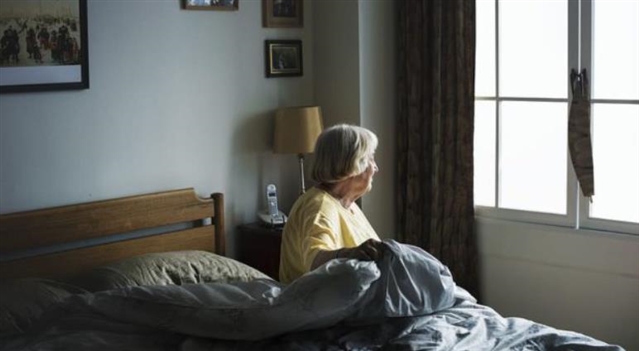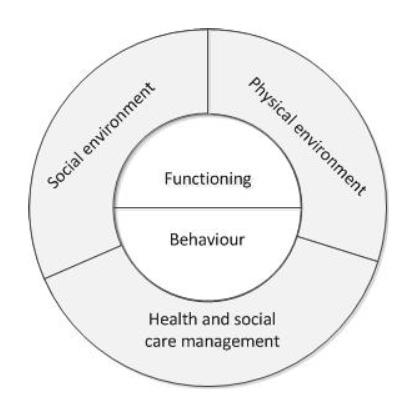|
|
| 扩展医疗保健模式,更好地保障居家老人的安全 | BMC Geriatrics |
|
论文标题:Addressing safety risks in integrated care programs for older people living at home: a scoping review
期刊:BMC Geriatrics
作者:Manon Lette, Eliva A. Ambugo et.al
发表时间:2020/02/28
数字识别码:10.1186/s12877-020-1482-7
微信链接:点击此处阅读微信文章
原文作者:Manon Lette
很多人会孤独终老。随着年龄的增长,老年人的生活可能会变得力不从心,需要接受长期的护理。为了更好地应对这些长期且复杂的需求,我们需要落实通过多种综合性的方式来提供初级保健和社区护理。本文中,BMC Geriatrics上最近发表的一篇综述的作者讨论了综合护理的益处和挑战,以及对老年人而言的重要安全性注意事项。

图1
综合护理的特点是能够以人为本地提供主动护理,并且可在多个专业学科和多种护理之间无缝协调。综合护理旨在改善机体功能、生活质量和护理质量等结局。综合性的初级保健和社区护理是支撑幸福的老年生活的重要后盾。
保护老年人的居家安全
对于居家的老年人来说,安全是第一位。老年人在生活中的多个方面会受限,这可能会影响其安全居家、独立生活的能力。这些风险可能来源于多种因素,包括他们的行为和能力、物理环境和社会环境,以及所能获得的健康护理和社会关爱。这些风险可能会导致许多问题,让居家生活危险重重,最终导致各种急诊就诊、住院、再住院、长期住院,甚至死亡。鉴于综合护理具有主动性、跨学科性和综合性等特征,因此有望提供机会来预防此类风险。
我们最近在BMC Geriatrics上发表的综述表明,针对居家老人提供的综合护理计划能遏制许多安全风险。根据图1所示的预定义概念框架对文章中列出的综合护理计划逐一进行了检查,结果显示,所有的计划都涉及解决与人们的功能和行为相关的风险,还有一些计划也涉及解决与人们的健康护理和社会关爱管理相关的风险。很少有计划涉及解决与人们的社会和物理环境相关的风险。
但是,随着在家中接受护理和保健的人数不断增加,与人们的社会经济状况、家庭环境以及护理人员的职责增加等相关的风险正变得越来越突出。因此,一定要关注这类风险,事实上已经有许多老年人表达了对这些问题的担忧。

图1.可能会影响人们居家安全的风险领域
及时发现风险,并结合相关的临床、行为和环境干预与支持,以及护理协调或病例管理,将能够增强护理提供者支持老年人居家安全的能力。要想推进这种积极主动和多层面的方法,需要健康护理和社会关爱等不同领域的专业人员通力合作。但是,我们的回顾发现,在针对居家老人的综合护理计划中,健康护理和社会关爱之间的合作并未普及。我们认为通过加大在技能合作和专业间的动态方面的投入,以及解决财政和组织方面的协作激励措施,是能够加强这些领域间合作的必要条件。
在老年人的安全性、自主性、护理质量和生活质量间找到平衡
这篇综述表明,综合护理计划可以潜在地包含多种应对和预防风险的方法。然而,在老年人中,如何确定各项的优先级别需要慎重考虑。所谓的以人为本,就是要根据个人的需求和偏好量身定制措施,这也是综合护理的一个核心部分。所以,应当意识到安全并非唯一要考虑的因素,特别是在住所环境中提供护理更是如此。虽然是在家中进行护理,但是家对于老人来说更是他们日常生活的环境,从某种意义上来说,生活的质量要比安全性更为重要。所以在解决安全风险的同时也要考虑老年人的感受。专业人员要结合老年人的偏好来考虑专业问题,并在安全性、预防、自主性和生活质量等方面找到平衡。
然而,在实际操作中,这又产生了谁该为居家老人的安全性负责的问题。诚然,专业人员无法控制老年人的生活方式,也不能左右他们做出的选择。所以,专业人员不应为这些选择的不利后果负责。那么,健康保健和社会关爱专业人员的职责到底是什么呢?老年人自己、他们的家庭或社会的责任又是什么?发生了不良后果到底该由哪一方来负责?回答这些问题需要具体讨论我们对护理质量、风险预防和道德因素的看法和预期,以及个人、专业人员和社会应负的责任与承担的过错。
扩展卫生保健模式
最后,我们应当在兼顾了安全性和老年人重视的其他方面的条件下利用好综合护理这一平台和工具。但是,必须指出的是,仅靠医疗保健和社会关爱是不够的。要想真正地帮助老年人,就需要社会朝着更广泛的健康和福祉模式转变,这种模式不仅重视健康、社会和环境因素在居家老年人的安全性中的作用,而且更强调社会中的你我他都应该献出一份力、履行一份职责。
BMC Geriatricsis an open access journal publishing original peer-reviewed research articles in all aspects of the health and healthcare of older people, including the effects of healthcare systems and policies. The journal also welcomes research focused on the aging process, including cellular, genetic, and physiological processes and cognitive modifications.
Citation Impact
2.818 - 2-year IF
3.458 - 5-year IF
1.420 - SNIP
1.352 - SJR
摘要:
Background
Many older people live at home, often with complex and chronic health and social care needs. Integrated care programs are increasingly being implemented as a way to better address these needs. To support older people living at home, it is also essential to maintain their safety. Integrated care programs have the potential to address a wide range of risks and problems that could undermine older people’s ability to live independently at home. The aim of this scoping review is to provide insight into how integrated care programs address safety risks faced by older people living at home - an area that is rather underexplored.
Methods
Safety was conceptualised as preventing or reducing the risk of problems, associated with individual functioning and behaviour, social and physical environments, and health and social care management, which could undermine older people’s ability to live independently at home. For this scoping review a systematic literature search was performed to identify papers describing integrated care programs where at least one intervention component addressed safety risks. Data were extracted on the programs’ characteristics, safety risks addressed, and the activities and interventions used to address them.
Results
None of the 11 programs included in this review explicitly mentioned safety in their goals. Nevertheless, following the principles of our conceptual framework, the programs appeared to address risks in multiple domains. Most attention was paid to risks related to older people’s functioning, behaviour, and the health and social care they receive. Risks related to people’s physical and social environments received less attention.
Conclusion
Even though prevention of safety risks is not an explicit goal of integrated care programs, the programs address a wide range of risks on multiple domains. The need to address social and environmental risks is becoming increasingly important given the growing number of people receiving care and support at home. Prioritising a multidimensional approach to safety in integrated care programs could enhance the ability of health and social care systems to support older people to live safely at home.
(来源:科学网)
特别声明:本文转载仅仅是出于传播信息的需要,并不意味着代表本网站观点或证实其内容的真实性;如其他媒体、网站或个人从本网站转载使用,须保留本网站注明的“来源”,并自负版权等法律责任;作者如果不希望被转载或者联系转载稿费等事宜,请与我们接洽。